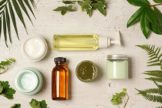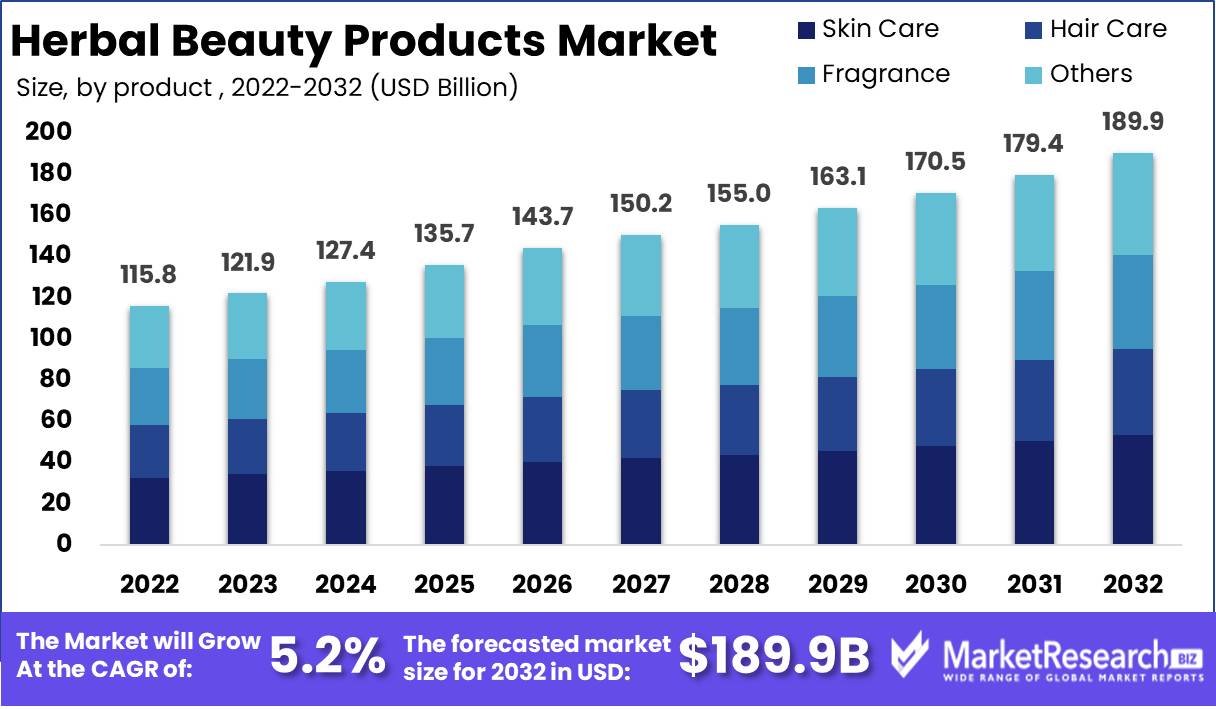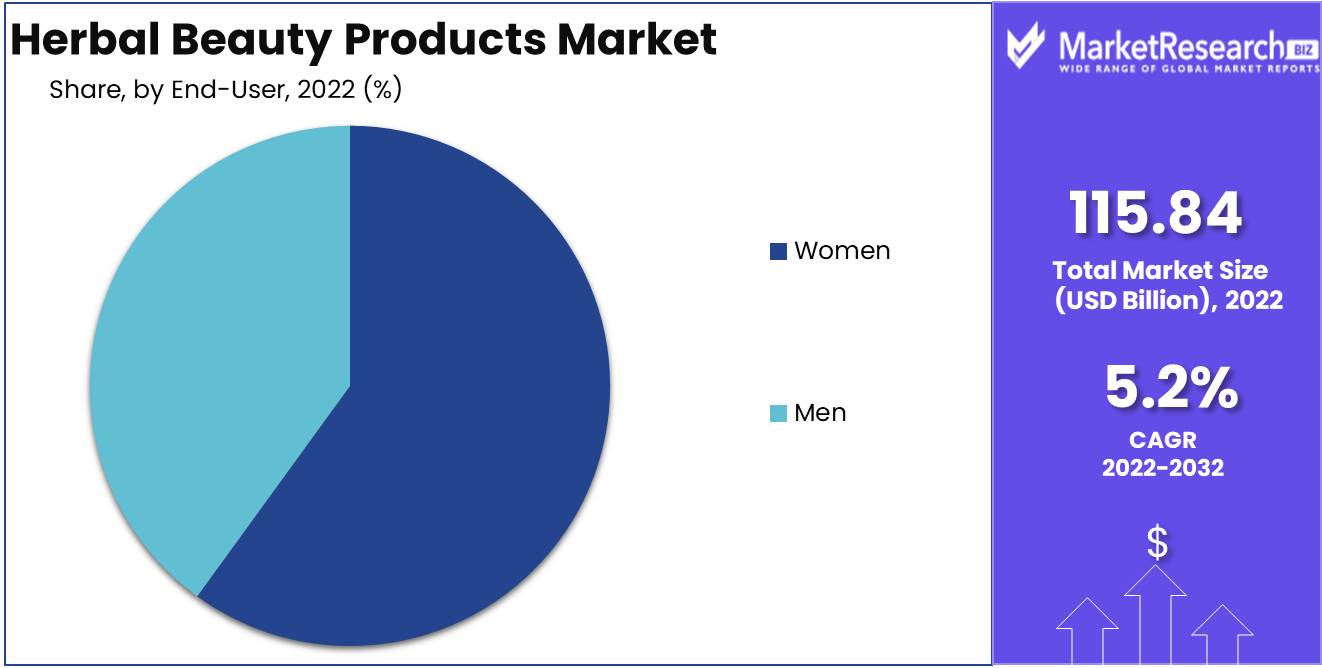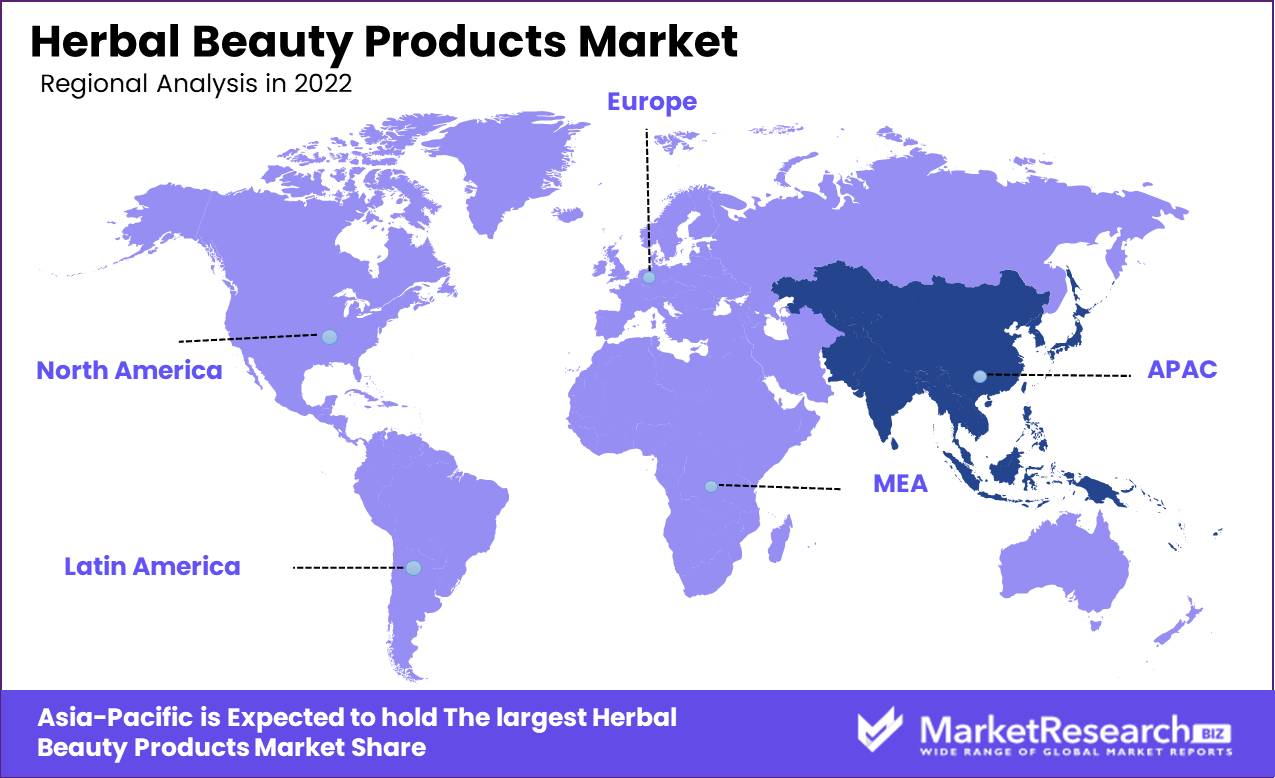
Herbal Beauty Products Market By product type (Skin Care, Hair Care, Fragrance, Others), By end user (Women, Men), By distribution channel (Supermarkets, Hypermarkets, Online Stores, Specialty Stores, Others), By Region And Companies - Industry Segment Outlook, Market Assessment, Competition Scenario, Trends, And Forecast 2023-2032
-
7388
-
May 2023
-
161
-
-
This report was compiled by Correspondence Linkedin | Detailed Market research Methodology Our methodology involves a mix of primary research, including interviews with leading mental health experts, and secondary research from reputable medical journals and databases. View Detailed Methodology Page
-
Quick Navigation
Report Overview
Herbal Beauty Products Market size is expected to be worth around USD 192.31 Bn by 2032 from USD 115.84 Bn in 2022, growing at a CAGR of 5.2% during the forecast period from 2023 to 2032.
The current upswing in the market for herbal beauty products is unquestionably an intriguing phenomenon, as an increasing number of individuals gravitate towards natural and organic beauty remedies. In this article, we will examine the multifarious facets of the herbal beauty products market, including its complex definition, multifaceted significance, cutting-edge innovations, massive investments, exponential growth, diverse applications, and ethical dilemmas. In addition, we will highlight some of the cutting-edge business applications of herbal beauty products, highlighting how they are currently being utilised in the industry.

The herbal beauty products market incorporates a variety of products formulated with natural or organic ingredients to improve the skin, hair, and overall appearance of a person. In contrast to conventional beauty products, herbal beauty products offer a variety of benefits, including a reduced risk of skin irritation, enhanced effectiveness, and environmental sustainability.
Herbal beauty products are intended to be a safe, effective, and environmentally friendly alternative to conventional beauty products, which frequently contain toxic chemicals and synthetic ingredients. These products contain organic and natural ingredients that are gentle and nourishing to the skin, hair, and body as a whole.
Numerous industries, including the beauty, healthcare, and personal care industries, are presently investing significantly in the herbal beauty products market. There has also been an increase in the incorporation of herbal beauty products into various products and services, with spas, salons, and beauty stores offering their customers natural and organic beauty products.
However, the market for herbal beauty products is not devoid of ethical quandaries, such as the exploitation of uncommon and endangered plant species, animal testing, and fair trade practises. To address these concerns, manufacturers have emphasised transparency, explicability, and accountability in their production processes, ensuring that their products are produced in an ethical and accountable manner.
Driving factors
Increasing consumer demand for organic and natural products
The market for herbal beauty products is experiencing unprecedented growth due to a number of factors that have had a positive impact on this burgeoning industry. As people become more conscious of what they place on their skin, the rising demand for natural and organic professional skincare products is one of the primary drivers of this growth. Consumers actively search out products that are free of harmful chemicals and made with skin-friendly herbal ingredients.
Growing awareness of the toxicity of chemical-based products
In addition, the market is benefiting from an increase in awareness regarding the detrimental effects of chemical-based beauty products, which has resulted in a growing preference for cruelty-free and vegan products. Now that consumers are more aware of the impact of their choices on the environment and animals, companies are under pressure to innovate and develop sustainable, ethical, and environmentally beneficial products.
Increasing Herbal Beauty Product Availability Through Online and Offline Channels
The increasing availability of herbal beauty products through online and offline channels is another significant factor contributing to the market's growth. With an increasing number of consumers turning to retail e-commerce platforms for their beauty requirements, companies in this industry have been quick to launch their products on online marketplaces to capitalise on this trend. Traditional brick-and-mortar retailers have also stocked their shelves with herbal beauty products to meet the rising demand.
Regulatory Alterations and Emerging Technologies
However, as with any industry, prospective regulatory changes may have an impact on the market for herbal beauty products. Governments may implement stricter regulations regarding the use of herbal constituents in such products, thereby impacting the supply chain and production costs of businesses operating in this industry. Nonetheless, such adjustments could present an opportunity for businesses to innovate and discover more sustainable methods of ingredient procurement.
In addition, emerging technologies like 3D printing and digital modelling have the potential to disrupt the market for herbal beauty products. It remains to be seen how these innovations will affect the market in the long term, but they could enable companies to create personalised skincare products for each individual's specific needs.
Threats to the Competitive Landscape
Another factor that could impact the competitive landscape of the herbal beauty products market is the emergence of niche and independent beauty brands. These businesses offer specialised, niche products that cater to specific requirements and preferences, thereby stealing market share from larger brands. The market is in a state of perpetual change, making it difficult to predict how it will evolve in the future.
Restraining Factors
The Dilemma of Herbal Beauty Product Prices Versus Synthetic Substitutes
The domain of herbal beauty products presents a perplexing obstacle to users who seek a flawless, radiant complexion. The high price of herbal beauty products relative to synthetic alternatives is a major barrier to their widespread use. This is due to the high cost of the raw materials used in herbal beauty products and the labor-intensive production process that follows. In addition, herbal beauty products are typically sold in lesser quantities, resulting in a higher unit cost.
Natural Ingredients: A Sword with Two Edges
The short shelf life and instability of natural constituents is a second constraining factor. Unlike synthetic ingredients, natural ingredients are susceptible to bacterial proliferation and therefore have a shorter shelf life. Therefore, herbal beauty products have a reduced shelf life and require special storage conditions, such as refrigeration, to preserve their efficacy. This conundrum regarding the stability of natural ingredients presents a challenge to both manufacturers and consumers.
Contraband Products: A Health Risk
On the market, the availability of counterfeit herbal beauty products poses a significant threat to the epidermis health and well-being of consumers. Typically, counterfeit herbal beauty products are manufactured with substandard ingredients or in unhygienic conditions, which can cause the user's skin to break out, develop rashes, itching, or even develop severe infections. This dire circumstance raises a red flag for users looking for a dependable source of herbal beauty products that guarantee their safety.
The Absence of Standards: A Regulatory Dilemma
In the herbal beauty industry, the absence of standardisation and regulation is also a significant factor. In the absence of defined guidelines and standards, the quality and safety of herbal beauty products are inconsistent. Frequently, manufacturers overstate the benefits of their products, causing consumer confusion and frustration. Because consumers have limited options for verifying the authenticity of herbal beauty products, they are hesitant to fully adopt these items. The Herbal Beauty Products Market embraces the use of natural cosmetic raw materials to cater to consumers seeking organic and eco-friendly alternatives.
Product Type Analysis
When it comes to the herbal beauty products market, skincare segment dominates the industry. With growing global concerns over skin health and rising beauty consciousness, the demand for skincare products has been on an upward trend. In this section, we will analyze the skincare segment, the economic development that drives its adoption, consumer trends and behavior towards it, and explain why it is projected to register the fastest growth rate over the forthcoming years.
Skincare products account for the major share of the herbal beauty products market, with a steady growth rate. Consumers are becoming more conscious of the benefits of natural and herbal ingredients in skincare products, which has led to an increase in the demand for skincare products that contain these ingredients. From face creams, facial masks, body lotions, to face wash, scrubs, and serums, skincare products come in different forms and are tailored to meet specific skin needs.
Consumers are increasingly prioritizing natural and herbal ingredients in their skincare products, driven by growing concerns over chemicals and their potential side effects. They seek natural and organic products that are free from harmful chemicals and provide effective skincare solutions. Moreover, several consumers are also moving towards gender-neutral skincare, looking for products that cater to their specific skin needs.
End-User Analysis
The end-user analysis identifies the different segments of consumers that drive the herbal beauty products market. In this section, we will analyse the consumer segment that dominates the herbal beauty products market, the drivers of economic development that increase their adoption, consumer behavior towards these products, and explain why women are anticipated to register the fastest growth rate over the forthcoming years.
Women consumers have been driving the herbal beauty products market for years, accounting for a significant share of the market. They have become more conscious of their skin health and beauty with growing access to information on skin care, including natural ingredients and herbs. From teenagers to middle-aged and elderly women, the demand for herbal products has been on a steady rise.
Women are highly conscious of their skin health and beauty, and are becoming increasingly aware of the benefits of natural and herbal-based skincare products. They seek skincare solutions that are tailored to their specific skin needs and concerns, and more women are also looking for gender-neutral products. Additionally, with the rise of social media platforms such as Instagram and Tiktok, women are keen on following beauty trends and experimenting with new products.
The women's segment is anticipated to register the fastest growth rate over the forthcoming years, driven by increasing economic development, growing awareness of herbal beauty products, and changing consumer behavior. As women continue to prioritize natural ingredients and seek skincare solutions that cater to their specific skin needs and concerns, the demand for herbal beauty products is projected to increase.

Distribution Channel Analysis
The distribution channel analysis for herbal beauty products, with a focus on the online Stores segment. We will review the drivers of economic development in emerging markets that are driving the adoption of online Stores retail channels, consumer behavior towards this segment, and finally, explain why the online Stores segment is anticipated to register the fastest growth rate over the forthcoming years.
The online Stores segment has consistently dominated the herbal beauty products market due to its convenience, accessibility, and the ease of use. Consumers can access a broad range of products from the comfort of their own homes or on the go, and can compare different products from various vendors in seconds. With the rise of e-commerce platforms such as Amazon, Alibaba, and other online stores, consumers can purchase their herbal beauty products at affordable prices with ease.
Consumers are increasingly flocking towards online Stores channels due to the convenience and ease of purchase. Furthermore, there has been a rise in demand for products that cater to specific skin types and concerns, with online retail channels giving consumers access to these niche products. Additionally, online channels also offer a broader range of skincare products, allowing consumers to compare and contrast different products from various vendors with ease.
Key Market Segments
By product type
Skin Care
Hair Care
Fragrance
OthersBy end user
Women
MenBy distribution channel
Supermarkets
Hypermarkets
Online Stores
Specialty Stores
Others (drugstores and beauty salons)Growth Opportunity
Expanding Product Portfolios to Meet the Diverse Needs of Consumers
Diverse customers populate the herbal beauty products market, varying from those seeking natural remedies for specific hair or skin issues to those seeking a more holistic approach to their daily beauty regimen. In response to these diverse requirements, companies are diversifying their product offerings to include a wide range of products suited to various skin types, hair types, and specific beauty concerns such as acne-prone skin, dry scalp, and anti-aging. This strategy allows businesses to broaden their customer base, appealing to consumers with diverse requirements.
Innovative and Exceptional Herbal Beauty Products
Innovation is the key to maintaining a competitive advantage in the market for herbal beauty products. To maintain a competitive edge, businesses are investing in research and development to create distinct and innovative herbal beauty products. Some brands, for instance, are incorporating exotic ingredients from around the world, such as matcha from Japan, turmeric from India, and baobab from Africa. These ingredients are highly coveted by consumers for their nourishing and revitalising properties. By incorporating novel and innovative ingredients into their products, businesses can distinguish themselves from rivals and appeal to consumers seeking something novel and distinct.
Product Promotion Through Collaboration with Beauty Bloggers and Social Media Influencers
In recent years, social media has evolved into an indispensable promotional instrument for beauty products. Companies are collaborating with beauty bloggers and social media influencers to expand their reach and generate buzz for their products. Consumers who rely on the reviews and opinions of beauty bloggers and influencers for the latest beauty products are devoted to their content. By forming partnerships with these influencers, businesses can tap into their existing audience and promote their products using their influence. This strategy not only increases product visibility, but also cultivates consumer credibility and trust.
Unlocking New Growth Frontiers through Market Penetration with High Growth Potential
The market for herbal beauty products is no longer restricted to developed regions like North America and Europe. Emerging markets such as Asia-Pacific, Latin America, and the Middle East are expanding significantly and offer companies in the herbal beauty products market substantial growth opportunities. These markets have a large population with a rapidly growing discretionary income and a growing awareness of the benefits of natural and organic products. By expanding into these untapped emerging markets, businesses can access a new customer base and capitalise on the high development potential, thereby advancing their growth objectives.
Latest Trends
Organic Obsession
The market for herbal beauty products is experiencing a surge of transformational trends that are creating a distinctive growth trajectory. As the contemporary population becomes more aesthetic-obsessed, the demand for organic and natural beauty products skyrockets, resulting in a massive shift in consumer preferences. Due to the potentially harmful effects of chemical-based beauty products, customers are pursuing safer and healthier alternatives that promise long-term benefits.
Personalization Over Standardisation
The emergence of personalised herbal beauty solutions is a significant trend sweeping the market for herbal beauty products. As consumers become more aware of the benefits of herbal ingredients, they demand customised herbal solutions that meet their specific requirements. This trend has resulted in the emergence of a new class of innovative herbal beauty products that are specially formulated to provide personalised results that correspond to individual preferences.
The expanding role of technology in the development and marketing
In addition, the market for herbal beauty products has undergone a technological revolution that has fundamentally altered the industry. Utilising cutting-edge technology, businesses are developing and marketing innovative products that cater to customers' ever-changing requirements and preferences. This has resulted in the development of a vast array of products, ranging from natural ingredients to hybrid herbal beauty products that combine natural and synthetic ingredients and are both highly effective and safer for the complexion.
Hybridization
The emergence of hybrid herbal beauty products is a trend that is gathering traction in the market for herbal beauty products. Companies are currently combining natural and synthetic ingredients to produce highly innovative skin care products that are both effective and safe for the skin. Customers seeking alternatives to conventional beauty products are increasingly drawn to these items.
Packaging for the Environment
In response to the increased demand for natural and organic beauty products, companies are also concentrating on eco-friendly packaging. Customers' environmental consciousness is growing, and packaging is now a significant factor in their purchasing decisions. In order to meet this demand and appeal to environmentally conscious consumers, businesses are turning to sustainable and eco-friendly packaging options.
Regional Analysis
The thriving herbal beauty products market in Asia-Pacific has experienced a substantial boom, fueled by a number of factors, including the availability of a vast array of medicinal plants with numerous benefits for the skin and hair, the alignment of these products with the current global trend of preferring organic, cruelty-free, and eco-friendly products, and the stringency of safety regulations imposed by various government agencies that govern the industry.
Studies have demonstrated that the use of herbal beauty products is effective in combating acne, preserving skin moisture, and reducing the symptoms of ageing, making them an ideal option for individuals with sensitive skin. These products are distinguished from conventional beauty products containing synthetic ingredients by their natural, chemical-free composition.
In addition, the rise in environmental concerns and the dangers posed by synthetic ingredients have resulted in the growing demand for organic products on the global market. Consumers are becoming more cognizant of their choices and their potential effects on their health and the environment. Current consumers are more concerned about the constituents in their skincare and beauty products, resulting in a significant increase in demand for herbal beauty products.
Variability in sentence length and complexity is an additional crucial element that characterises this content. For instance, the first sentence of the paragraph is lengthy and intricate, emphasising the significance and complexity of the market's growth factors. In contrast, the second and third sentences are shorter and more straightforward in describing the skin and hair advantages of herbal beauty products. The fourth sentence is also lengthier and more intricate, discussing the distinction between herbal and conventional beauty products. The final sentence is shorter but still complex, describing how consumer awareness and knowledge affect their preferences for herbal beauty products.

Key Regions and Countries
North America
- US
- Canada
- Mexico
Western Europe
- Germany
- France
- The UK
- Spain
- Italy
- Portugal
- Ireland
- Austria
- Switzerland
- Benelux
- Nordic
- Rest of Western Europe
Eastern Europe
- Russia
- Poland
- The Czech Republic
- Greece
- Rest of Eastern Europe
APAC
- China
- Japan
- South Korea
- India
- Australia & New Zealand
- Indonesia
- Malaysia
- Philippines
- Singapore
- Thailand
- Vietnam
- Rest of APAC
Latin America
- Brazil
- Colombia
- Chile
- Argentina
- Costa Rica
- Rest of Latin America
Middle East & Africa
- Algeria
- Egypt
- Israel
- Kuwait
- Nigeria
- Saudi Arabia
- South Africa
- Turkey
- United Arab Emirates
- Rest of MEA
Key Players Analysis
Due to consumers' growing preference for natural and organic ingredients that promote a sense of wellness and purity, the market for herbal beauty products has witnessed a meteoric rise in demand in the contemporary era. Notably, the market is dominated by a group of prominent actors who have carved out a distinct niche in this setting. These industry giants include, to name a few, L'Occitane International SA, Himalaya Herbals, Kiehl's, Oriflame Cosmetics AG, and The Body Shop International Limited.
L'Occitane International SA, the French multinational corporation that has dominated the market for natural beauty and skincare products for an extended period of time, offers an extensive product line that includes numerous skincare solutions, fragrances, and body care products that have received widespread acclaim from the most discerning clients. The company has a formidable presence in Asia, Europe, and North America, with a vast network of over 3,000 stores catering to a variety of consumer needs and preferences.
Himalaya Herbals, the Indian behemoth that has established a formidable reputation in the domain of herbal healthcare and personal care products, has an impressive product lineup that includes, among others, skincare, hair care, and infant care products. The brand has amassed an enviable fan base in India and attained the pinnacle of success in a number of other countries.
Due to its extensive selection of cosmetic care, body care, and hair care products, the American brand Kiehl's, which is synonymous with superior quality and natural ingredients, has left an indelible mark on the minds of its customers. What distinguishes Kiehl's from the competition is its unwavering commitment to providing customised skincare consultations and product recommendations that are tailored to each customer's specific needs and preferences.
Oriflame Cosmetics AG, a Swedish beauty company renowned for its superior selection of natural and organic skincare and cosmetics products, has been at the vanguard of the movement emphasising the importance of ethical and sustainable beauty. The company has a significant presence in Europe, Asia, and Africa, and boasts more than three million consultants who tirelessly sell its products in more than sixty countries, immensely expanding its reach and visibility.
Top Key Players in Herbal Beauty Products Market
- Weleda AG
- Bio Veda Action Research Pvt. Ltd.
- Arbonne International, LLC
- VLCC Health Care Limited
- The Himalaya Drug Company
- GROWN ALCHEMIST
- Renpure, LLC
- Hauschka Skin Care, Inc.
- Tata's Natural Alchemy, LLC
- W. BASICS
Recent Development
In 2020, The Body Shop introduced a line of vegan and eco-friendly haircare products infused with natural constituents such as ginger, birch bark and white nettle.
In 2020, Garnier a brand owned by L'Oreal, will launch a line of natural and vegan hair care products including an argan oil-infused shampoo bar.
In 2020, Dove, a brand owned by Unilever, pledged to use only recycled plastic in its beauty products including its natural and organic product lines.
In 2021, Himalaya Herbals, an Indian herbal skincare company, introduced a line of plant-based skincare products containing aloe vera, turmeric, and neem.
In 2021, the Korean skincare company Innisfree introduced a line of herbal skincare products containing natural constituents such as green tea, orchid, and volcanic ash.
In 2021, Herbivore, a brand based in the United States, introduced a line of hygiene products containing CBD-infused natural ingredients such as hemp seed oil and chamomile.
In 2021, the Australian company Sukin introduced a line of natural and eco-friendly haircare products containing macadamia oil, jojoba oil, and shea butter.
Report Scope:
Report Features Description Market Value (2022) USD 115.84 Bn Forecast Revenue (2032) USD 192.31 Bn CAGR (2023-2032) 5.2% Base Year for Estimation 2022 Historic Period 2016-2022 Forecast Period 2023-2032 Report Coverage Revenue Forecast, Market Dynamics, COVID-19 Impact, Competitive Landscape, Recent Developments Segments Covered By product type: Skin Care, Hair Care, Fragrance, Others
By end user: Women, Men
By distribution channel: Supermarkets, Hypermarkets, Online Stores, Specialty Stores, Others (drugstores and beauty salons)Regional Analysis North America – The US, Canada, & Mexico; Western Europe – Germany, France, The UK, Spain, Italy, Portugal, Ireland, Austria, Switzerland, Benelux, Nordic, & Rest of Western Europe; Eastern Europe – Russia, Poland, The Czech Republic, Greece, & Rest of Eastern Europe; APAC – China, Japan, South Korea, India, Australia & New Zealand, Indonesia, Malaysia, Philippines, Singapore, Thailand, Vietnam, & Rest of APAC; Latin America – Brazil, Colombia, Chile, Argentina, Costa Rica, & Rest of Latin America; Middle East & Africa – Algeria, Egypt, Israel, Kuwait, Nigeria, Saudi Arabia, South Africa, Turkey, United Arab Emirates, & Rest of MEA Competitive Landscape Weleda AG, Bio Veda Action Research Pvt. Ltd., Arbonne International, LLC, VLCC Health Care Limited, The Himalaya Drug Company, GROWN ALCHEMIST, Renpure, LLC, Hauschka Skin Care, Inc., Tata's Natural Alchemy, LLC, W. BASICS Customization Scope Customization for segments, region/country-level will be provided. Moreover, additional customization can be done based on the requirements. Purchase Options We have three licenses to opt for: Single User License, Multi-User License (Up to 5 Users), Corporate Use License (Unlimited User and Printable PDF) -
-
- Weleda AG
- Bio Veda Action Research Pvt. Ltd.
- Arbonne International, LLC
- VLCC Health Care Limited
- The Himalaya Drug Company
- GROWN ALCHEMIST
- Renpure, LLC
- Hauschka Skin Care, Inc.
- Tata's Natural Alchemy, LLC
- W. BASICS




